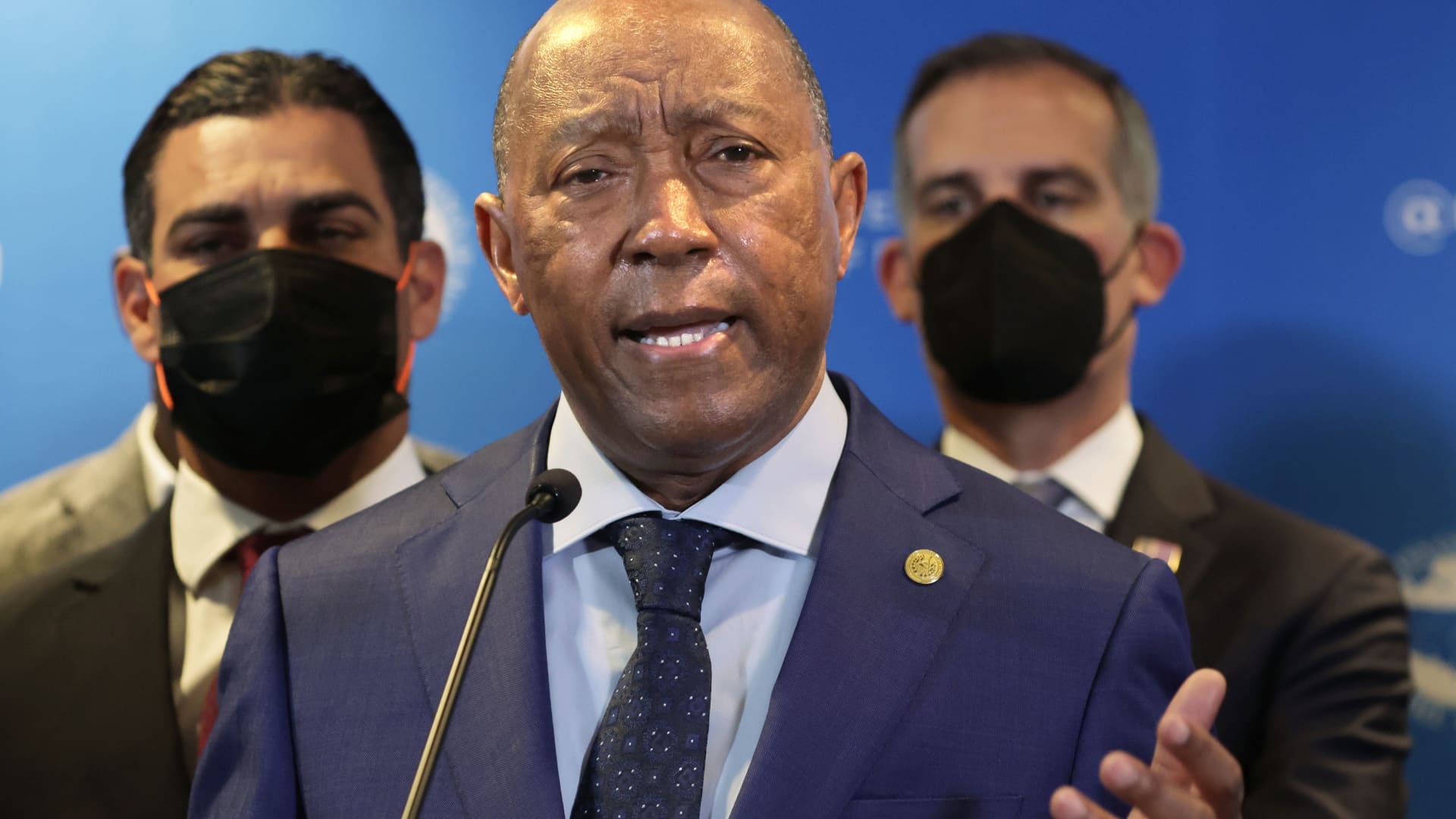Houston mayor touts city’s climate action plan following major flooding disasters

Mayor of Houston, Texas, Sylvester Turner speaks during a news conference at the 90th Winter Meeting of United States Conference of Mayors (USCM) on January 19, 2022 in Washington, DC.
Alex Wong | Getty Images
Houston Mayor Sylvester Turner this week described progress the city is making toward curbing planet-warming emissions and building storm resilient infrastructure as part of its climate action plan, which the Texas city launched two years ago after grappling with six major flooding disasters in just five years.
Turner, during an interview with CNBC Correspondent Contessa Brewer, said the country’s fourth-largest city is working to lead the clean energy transition with technologies, including clean hydrogen and carbon capture, utilization, and storage.
Houston is one of the largest industrial bases in the world and is responsible for approximately 10% of greenhouse gas emissions in the U.S. and 3% of global emissions. It’s also home to 40% of all publicly traded oil and gas companies and is the only major U.S. city that doesn’t have land-use zoning laws, which means that anything can be built anywhere.
The city’s climate plan, however, sets a goal to slash emissions by 40% by 2030 and become carbon neutral by mid-century. The mayor said the city is now building higher than the floodplain elevation, promoting green stormwater infrastructure, weatherizing homes, and planting 4.6 million trees by the end of the decade.
“We are building forward, not necessarily building back,” Turner said during the interview released on Thursday.
“It’s critically important that this city leads an energy transition, that we electrify our public and private fleet, that we plant the necessary trees, we do the heat mapping — all of those things that will be essential to put us in the best place going forward,” Turner said.
Due to its proximity to the Gulf Coast, Houston is particularly vulnerable to storms and hurricanes, which are growing more frequent and intense as the climate changes.
Hurricane Harvey, which flooded a swath of coastal Texas from Harris County to the Louisiana border in 2017, came after two other 500-year flood events in Houston. And Harris County, which includes Houston, has experienced seven federally declared disasters during the last decade.
Turner said the destruction from Harvey was a turning point for the city with regard to efforts to mitigate climate change, and since then the city has worked to reduce waste and energy use and promote safer and more resilient development.
Houston has also received buy-in from the local energy sector on some of its climate initiatives, the mayor said, working with companies such as Exxon Mobil. For instance, the city is building 52 megawatts of utility-scale solar on a local 240-acre former landfill site that’s set to become the largest urban solar farm in the country, Turner said.
“We have some of the largest greenhouse gas emitters right here in the city of Houston,” Turner said. “And that’s why I saw it very important to work in collaboration with them.”